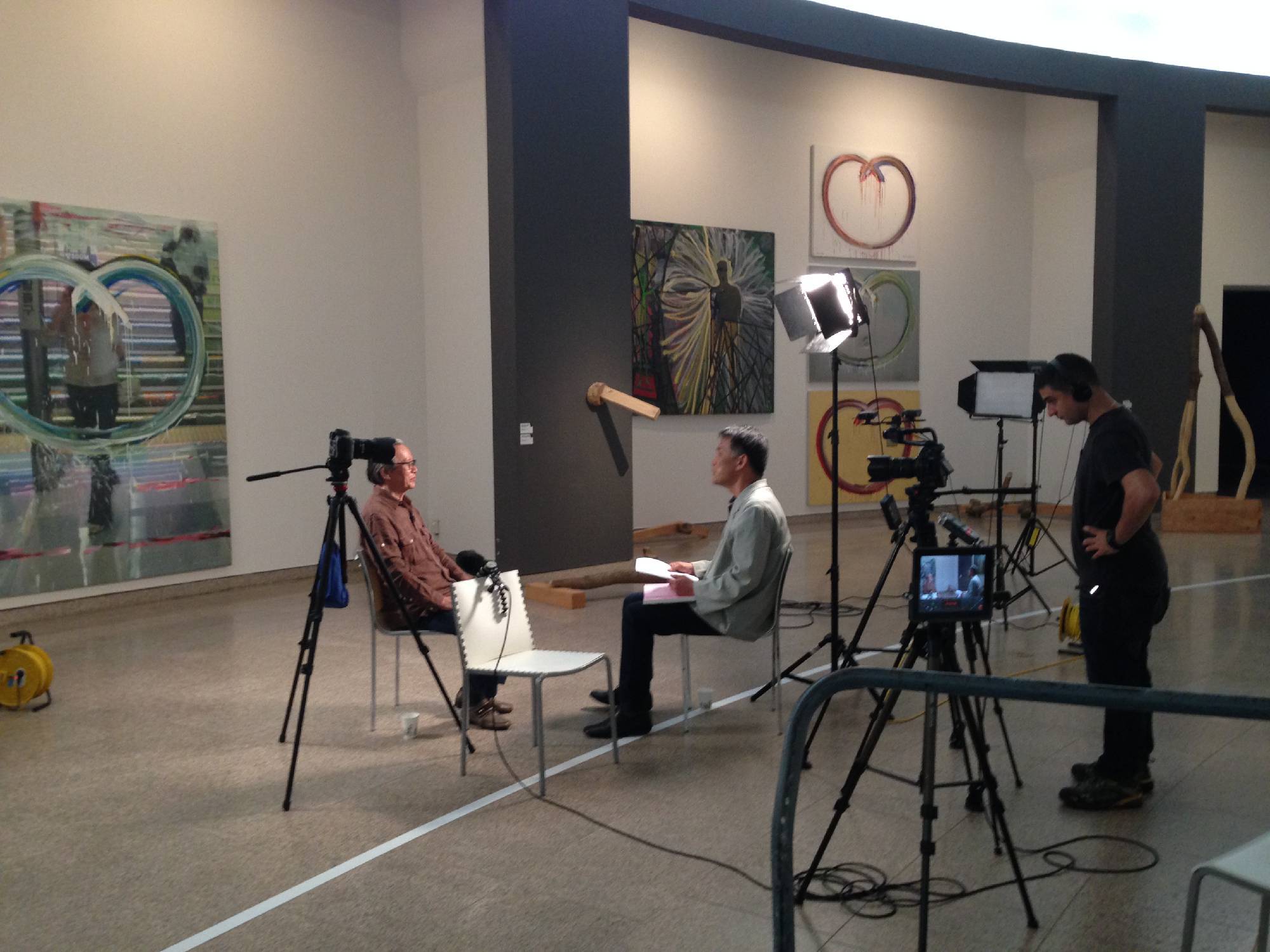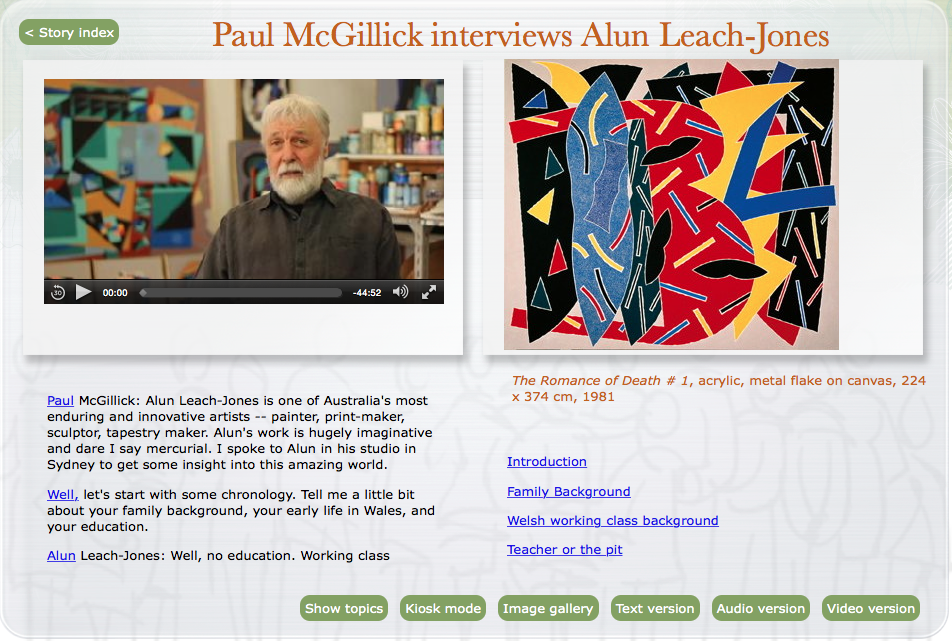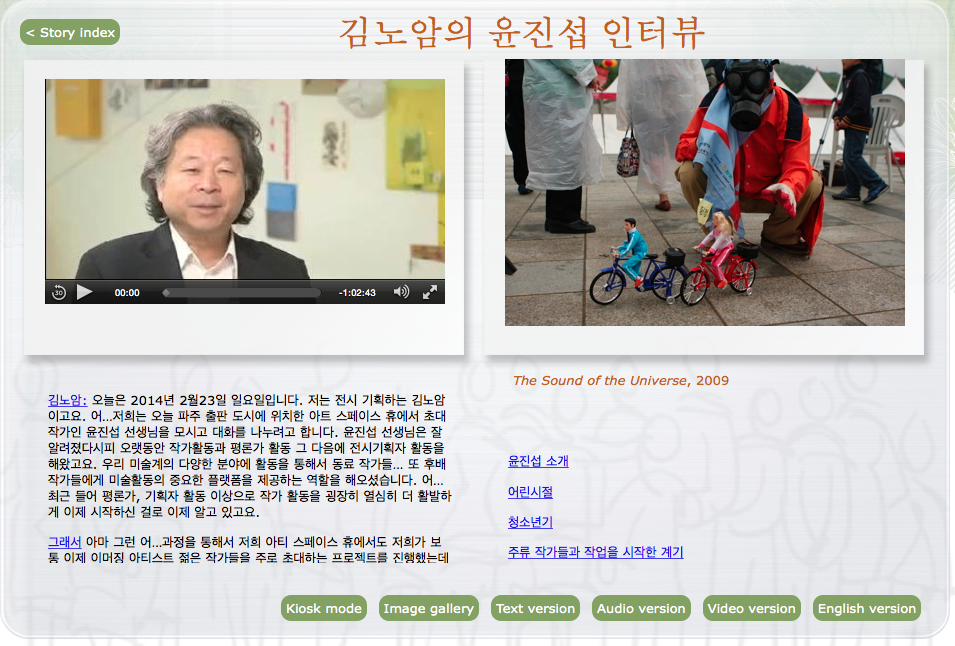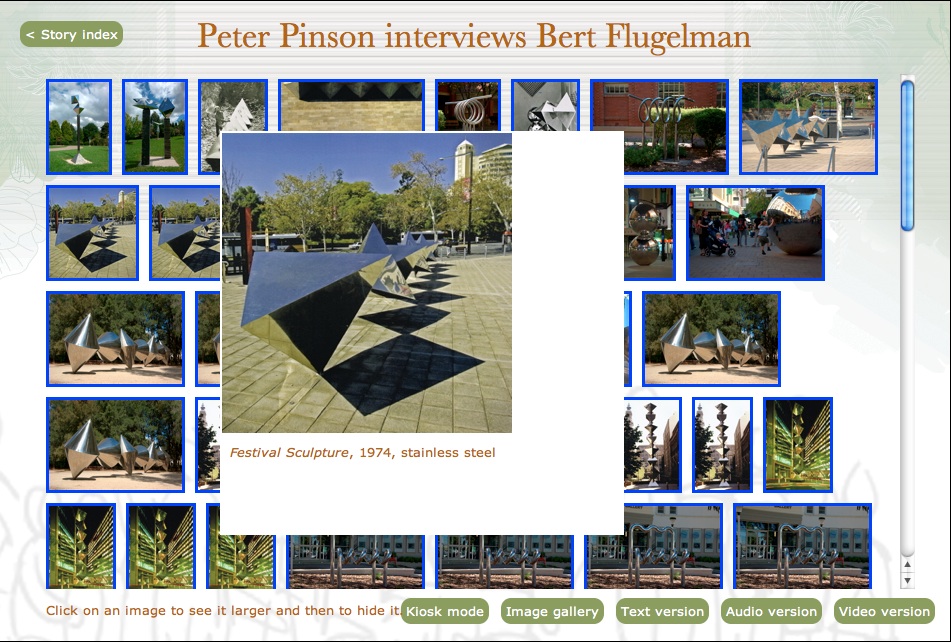This week’s contributing writer, Dr. Bob Jansen, has over 20 years of experience in the information technology industry, encompassing the commercial, academic and research environments. He is a founding Director of the Cultural Conversations project and is the project’s Chief Scientist responsible for all the technology used to process and publish the interviews.
“My “cultural conversation” with Prof. Peter Pinson was a welcome opportunity to relive more than half a century of art making. It is gratifying to think that my experience might help young artists in the future and perhaps be of interest to academics and lay people interested in visual art.” – Col Jordan, Australian artist
There was a time when enjoying the riches of international art, especially contemporary art, involved sea journeys and taxing horse-and-carriage expeditions. Later, improved modes of travel were augmented by photography, black and white, then color reproductions in books and magazines and, more recently, the explosion of bienniales. Today, while nothing beats face-to-face engagement with art, the digital age and the world-wide-web enable immediate access to world art, both historical and contemporary.
But the digital age doesn’t just offer convenience, it also provides capacity, delivering huge volumes of contextual information in an affordable and accessible way, well beyond the potential of hard copy, not to mention real-time personal experience. Crucially, it can supplement images of the work and raw information about artists, with filmed conversations in which the artists can be seen and heard talking about their work. Without the reach, capacity, and flexibility of digital modes the bulk of oral art history would be lost. While oral history may not always be factually accurate, it brings its own truth to our understanding of how a culture has been made. It brings the kind of texture that raw facts cannot supply, and it brings an emotional dimension only possible when someone speaks in their own voice of their own experience.
Cultural Conversations is an online oral history archive of the visual arts in Australia and South Korea that began as a pilot video interview with Australian artist, Yvonne Boag. Out of this grew the idea of an archive of artists based on video interviews using Testimony Software, bespoke software developed for recording and publishing oral history. Launched in 2012 by Dr. Bob Jansen, Yvonne Boag, and Dr. Paul McGillick, the project runs under the auspices of the Australian Centre for Oral History.
When it launched, Cultural Conversations focused on eminent Australian visual artists, with professionally produced video interviews 45-60 minutes in duration accompanied by simultaneous transcriptions, still images of works referred to in the discussion, a table of contents, and a thematic map supporting inter- and intra-interview navigation. The interviews are conducted in the artist’s studio and begin with footage of the studio to show the context of the artist’s creative activity. To date, eighteen interviews with eminent Australian artists have been published.
As a free website, the project has enormous international potential, both in taking Australian art to the world, but also in generating cross-cultural exchange. With the help of Yvonne Boag – who has had a 20-year association with South Korea as a visiting professor at Ewha Women’s University, Seoul National University of Science and Technology, and Chong-ju University – we have also developed a parallel program featuring South Korean artists. Already there are a half a dozen interviews available online with transcripts in English and Korean, providing exposure to a rich visual arts tradition little known outside of South Korea.
Cultural Conversations is a unique cross-cultural exchange that overcomes the barrier of physical distance in order to celebrate the richness of cultural distance and difference.
As a digital archive utilizing only international web standard technologies (HTML5, CSS3 and Javascript), the archive is future-proofed as much as possible given the financial capacity of the Centre while providing access to the widest possible set of browsers. In addition, the authoring toolkit, TLSTranscription (by which the archive is built), allows content creators to focus on the content, not the technology. TLSTranscription automatically creates the various technology elements for online browsing. The environment is language-independent, supporting as many languages as a content creator wishes to support.
The Cultural Conversations archive offers free access and is directed at the international community, promoting and celebrating cross-cultural dialogue. The project has also had an international impact. The web site registered nearly 40,000 unique visits from around the world between April and December 2016, and continues to register an average of 5,000 visits per month. This shows a significant demand for content of this sort.




